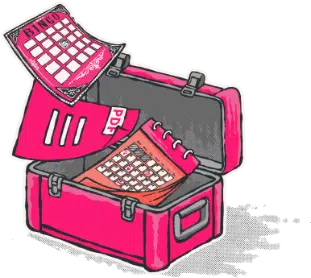You found our list of diversity program ideas.
Diversity program ideas are group activities designed to foster a workplace culture where all team members feel accepted and appreciated for their unique identities. Examples include Diversity Briefings, Music and Dance, Art, and Word Clouds. These programs aim to promote equality, increase employee engagement, and produce innovative concepts. These programs are also known as “diversity initiatives.”
These ideas are examples of diversity and inclusion activities, culture-building activities, and employee engagement activities. Such programs promote the importance of workplace diversity.
This article includes:
- diversity program ideas in the workplace
- workplace diversity program activities
- workplace diversity program events
- workplace diversity program meeting ideas
Let’s get started!
List of diversity program ideas
Diversity program ideas can drive existing processes and solutions in the company. The following are some ideas you can implement for your workplace diversity program.
1. Intersectionality Workshops
Intersectionality workshops deepen employees’ understanding of how various aspects of identity intersect. These discussions cover how intersectionality influences individuals’ experiences within the workplace. These workshops explore the complex interaction between factors like race, gender, sexuality, disability, and socioeconomic background. By discussing intersectionality, participants learn about the challenges and perspectives of colleagues with multiple marginalized identities. These workplace diversity program events promote empathy, foster a more inclusive environment, and teach employees to support one another.
2. Hotjar Challenge
Language is fundamental to creating a work environment where all employees feel valued and appreciated. You can prepare a company-wide guide on inclusive language to facilitate a discussion regarding the positive and negative language used to describe business diversity and inclusion. You can also create a “bias jar” to collect anonymous comments from team members and use them to spark productive discussions. This step encourages using language free of gender bias in the workplace. In a diverse and accepting society, how we address others is crucial for better equality and acceptance at work.
Many women on a team may feel uncomfortable or left out if they hear the term “guys” used in a chat. You can ask every team member to put one dollar in the jar whenever they misuse the term. Raising awareness and funds for an important cause while simultaneously discouraging the use of sexist language in the workplace is a win-win.
Get our free team building toolbox
- icebreaker games
- bingo cards
- DIY guides
 by teams at FedEx, Amazon, Deloitte and 73,930+ others
by teams at FedEx, Amazon, Deloitte and 73,930+ others

3. Diversity Hackathons
Diversity hackathons bring employees together to address diversity and inclusion challenges within the organization collaboratively. Participants work in teams to brainstorm, develop, and present innovative solutions to specific diversity-related issues. Teams may tackle concerns such as improving diversity recruitment efforts or enhancing workplace accessibility. These hackathons encourage creative thinking, inclusivity, and teamwork while creating actionable ideas to drive positive change. Further, hackathons help employees actively contribute to the organization’s diversity and inclusion goals.
4. Diversity Research and Innovation Grants
These programs offer financial resources to support research and innovation projects related to diversity, equity, and inclusion. These grants may be open to employees, external researchers, or community partners. Interested parties may look into topics such as workplace bias, diversity in product design, or strategies to foster an inclusive culture. By offering such grants, organizations show their interest in learning and driving positive change. These initiatives encourage participants to develop evidence-based practices and innovative solutions. Ultimately, the goal is to address diversity-related challenges, promoting a more inclusive and equitable workplace.
5. Diversity Calendar for Events
In a multiethnic workplace, it would be prudent to celebrate various religious and secular holidays. However, many workers may feel alienated if you simply observe the most popular holidays. One way to maximize diversity’s benefits is via a well-attended diversity calendar. The calendar will contain all the company’s diversity and inclusion events for the entire year.
Learning about and participating in the traditions and celebrations of other cultures may be an excellent way to expand one’s horizons. Otherwise, the organization risks missing out on opportunities to foster more loyalty among its workforce toward its stated goals. Including days like Gay Pride, International Women’s Day, International Day to End Racism, and International Day of People with Disabilities in your annual calendar of events commemorating and celebrating diversity is a great choice.
Here is a list of holidays to celebrate in the workplace.
6. Employee Value Proposition
The EVP, or Employee Value Proposition, is the total monetary and non-monetary value provided to workers for their efforts and contributions to the company. Workplace diversity committee ideas might help you increase employees’ value appeal. Revising the employee value proposition shows your current and potential employees that you value diversity and inclusion as core company values. A statement from your company’s CEO might be the solution. The CEO of an organization must take the lead in promoting employee diversity and implementing the recommended strategies in the workplace.
7. Snapshot Board
Photos are great conversation starters. Putting up photos and other mementos of employees’ significant life events on a bulletin board might be a great way to kickstart dialogues among workers. Displaying intimate keepsakes at work might shed light on many employee experiences. In addition, this idea promotes a workplace culture of respect and dignity, since it helps employees learn to understand and appreciate one another’s points of view.
Part of your workplace diversity program ideas should be creating a welcoming workplace where employees feel comfortable sharing their own stories and insights. Workers participating in this activity as a team may learn interesting facts about one another. Transparency, integrity, and vulnerability are recipes for developing bonds and fostering empathy.
Here are more office bulletin board ideas.
8. Accessibility Initiatives
Accessibility initiatives make the workplace and company resources more accessible to those with disabilities. These initiatives include physical, digital, and assistive accommodations. For instance, firms may implement wheelchair ramps, screen reader-friendly websites and documents, and assistive technologies. By focusing on accessibility, organizations comply with legal requirements and ensure that all members can engage with the company. These initiatives promote inclusivity, remove barriers, and create a more welcoming environment for all.
9. Music and Dance Day
Music is a great way to unify individuals of different backgrounds. Everyone has an innate capacity to appreciate music, regardless of the song’s language. One idea for your diversity and inclusion event may be for workers to contribute some of their favorite cultural music and songs.
You can take an extra step by hosting a series of lessons focusing on various ethnic dances like salsa and tango from worldwide. The staff members will benefit from the exercise and learn about other cultures via this event. You may also take your staff out for a performance by booking tickets to a concert that features music and dancing from various cultures.
10. Fashion Day
Fashion can also be a part of your workplace diversity program activities. You can promote workplace diversity by encouraging all employees to wear cultural attire and accessories. Employees may dress however they see fit, including but not limited to sporting jewelry, team jerseys, regional colors, and traditional costumes. You should ensure you set up clear guidelines for the attire expected of attendees well in advance of the diversity event.
11. Word Clouds
Word clouds are a fun and unique distant diversity team-building exercise. To kick off this activity, have your team members complete a survey or questionnaire using the one word that comes to mind while thinking about different topics. Food, clothing, family, and friends are just a few examples of possible themes.
After collecting the responses, you can create a word cloud. The font size of more commonly used words will be bigger, and vice versa. This idea can reveal a group’s concept variety and similarities. You should post or share the results with the group, ideally in a style that is easy to read and understand.
12. Pair and Share
Coworkers may engage in pair and share conversations to foster a more diverse and inclusive workplace. You can use Zoom’s breakout room function to split your team into smaller groups so every participant can get their work done faster. Afterward, participants discover one to four features in common and one to four facts that set them apart.
This activity allows team members to see their similarities and differences, leading to more productive collaboration. The idea also helps workers connect, which is essential for any organization but more so in remote workplaces where employees do not see each other often.
13. Diversity Briefings
Conducting diversity briefings is a crucial first step in fostering an inclusive and welcoming work environment. Team leaders may organize monthly meetings and discussions to create plans for different diversity efforts. For instance, workers from different cultural backgrounds might provide a summary of significant religious and secular holidays that results in new company celebrations or PTO days.
Diversity briefing is a great way for employees to share their histories, religions, and cultures at work. As a bonus, the idea has few negative consequences and raises folks’ social intelligence and awareness.
Check out more team meeting ideas.
14. Public Speakers
Inviting guest speakers to provide online lectures is one of the most efficient ways to increase diversity in the workplace. These public speakers have made it their life’s work to become authorities on their chosen topics.
Staff members benefit from the opportunity to raise concerns and get direct responses. Online chats allow distant team members to participate in meetings and discussions, comment, and ask questions in real time. Publicizing these talks may help get the word out about important issues, so long as the presenter gives confirmation.
Check out this list of virtual keynote speakers.
15. Rotating Meeting Leaders
Failure to promote a diverse leadership team is a serious problem in many organizations. Rotating leadership is one of the best workplace diversity program meeting ideas. By taking turns as meeting facilitators, workers get exposure to various perspectives and become used to treating one other with respect in authority roles. Depending on group size, you can assign team members between one and four monthly meetings. It is a good idea to get the group on the same page by having a quick pre-call discussion or contacting the call’s designated leader to establish ground rules and discuss what will be covered.
The next step beyond this strategy is to provide leadership training and opportunities that welcome and inspire team members from all walks of life to contribute. In contrast, a great place to begin is by giving everyone an equal chance to take charge during meetings. Team members may get assurance and conviction with the help of this method.
How to make diversity programs successful
Simply instituting diversity program ideas will not be sufficient to produce actual diversity in your firm. To ensure the effectiveness of your diversity program, consider the following factors.
1. A Complete Needs Analysis
Without initially doing a comprehensive evaluation of your existing situation, it may be impossible to establish what needs to change in terms of diversity.
For instance, a company might believe they excel at gender equality because they have many female employees. However, the existence of women on staff is insufficient to guarantee a gender-diverse culture unless you consider their individual jobs, responsibilities, and pay. Interestingly, this idea comes before even accounting for non-binary gender identities.
At the beginning of the process, you may want to work on in-house focus groups, research initiatives, or engagement surveys. This step shows your dedication to diversity and inclusion while incorporating employee input. In addition, an in-depth analysis can help you pinpoint which aspects of your diversity program need work.
2. A Blueprint for Inclusion and Diversity Training
Your staff, especially the managers in charge of your diversity initiative, will require a firm structure for guidance. Making sure your training program is well-defined is another way to demonstrate to workers at all levels how seriously you take issues of diversity and inclusion. In addition, focusing on precise KPIs and communicating the individual advantages to all participants will help assure the success of your training efforts.
All employees, not just bosses, should have access to diversity training, affirming your diversity commitment. Employees will feel more confident after learning how to recognize and address unfair actions.
3. Laser-Focused Leadership
For employee engagement and retention, few ideas are as effective as encouraging personal development among current employees and backing extra efforts to increase diversity in the workplace.
Mentoring programs can significantly increase diversity at work and in management positions. This fact applies if these programs try to find compatible mentors and mentees across demographic boundaries like age, color, and gender. It is never too late to launch a mentoring initiative at your company.
4. Targeted Hiring
Targeted recruitment initiatives are beneficial for diversity, according to studies. For instance, if a college-level recruiting effort began this year, it might significantly improve the percentage of women and people of color in management positions in a few years. First, you should consider ways to improve your company’s attractiveness to a broader pool of potential workers. Then, you can actively recruit members of underrepresented ethnic groups inside your organization.
5. Specific Aims and Objectives
Many organizations’ diversity initiatives run into trouble because of their overarching philosophy. These firms have many ideas but few concrete objectives. While it is admirable to strive for more variety, it is hard to know whether you have succeeded without some measure of achievement.
Without diversity-specific aims and goals, you may also struggle with a lack of motivation and a sense of urgency. The ability to monitor progress is essential. You can hold managers and leaders responsible for choices by establishing defined objectives and a mechanism to track progress. This step will encourage decision-makers to value diversity.
6. Diversity Managers
Appointing a diversity manager is excellent if you want to take the initiative with your program. This step ensures that employees keep tabs on your company’s diversity, inclusion, and tolerance policies. Employee Resource Groups handle diversity initiatives on top of their regular duties. Instead of only talking about how welcoming and inclusive your environment is, take responsibility for making it a reality.
7. Evaluations and Reassessments
The only way that goals can help you realize your many dreams is if you regularly evaluate and adjust them. As a result, you may be sure that the measures in place are sufficient. Furthermore, this step enables you to plan for the future and make course corrections as required to meet future demands. As new information becomes available, it is possible to adjust your strategy with the help of assessments.
Reviewing and revising current policies at regular intervals is essential. You should evaluate your diversity program yearly or quarterly to ensure it still meets the requirements of your company, employees, and the wider world.
Conclusion
Every business should have diversity and inclusion efforts ingrained in its DNA. A firm approach to diversity program ideas in the workplace ultimately determines competitive advantage. Organizational diversity considers both the shared characteristics and individual heterogeneity of its members. Though anti-discrimination employment standards follow equal opportunity legislation, they do not fully protect individuals from prejudice due to variations in personality that may be traced back to factors such as upbringing, socialization, and cultural features. Companies may meet this need by creating strategies for increasing diversity in the workplace.
For more information, check out books on DEI and virtual diversity activities.




